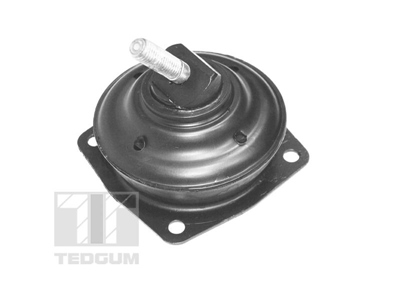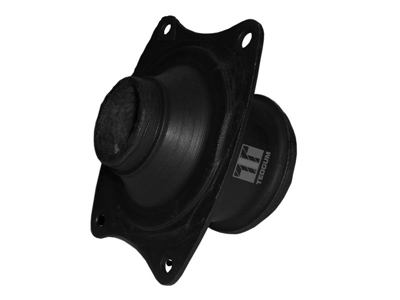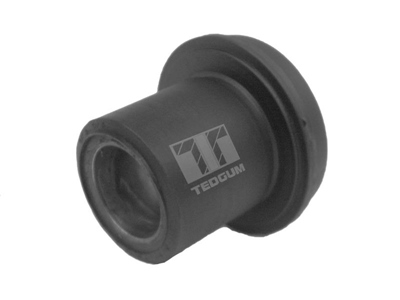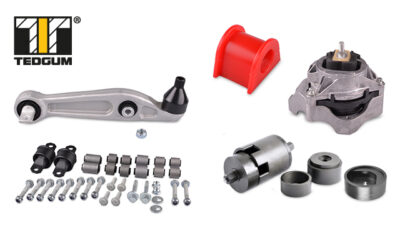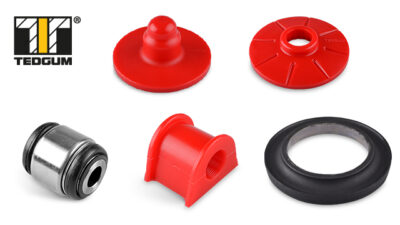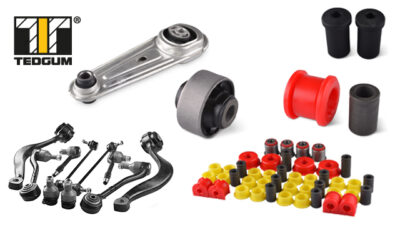
In the 1950s, motorsport was dominated by the Mercedes-Benz team. This was due to the 300SLR model, which in terms of the solutions used was far ahead of its time and offered performance that even today makes a big impression. The streak was cut short at the Circuit de la Sarthe during the 24 Hours of Le Mans. On June 11, 1955, during the 33rd lap of the track, the 300SLR crashed into the rear of a braking in front of it Jaguar. The vehicle took off and hit the top of the earth embankment that served as a barrier. The car was torn apart and the elements hit the spectators. As a result of this incident, 83 people were killed and 120 were injured. After that, Mercedes-Benz withdrew from motorsport for many years.
The company did not want to say goodbye to the highly skilled engineers responsible for the sports section. They realized that their potential could still be used. Employees were given a new task, in a slightly different convention than their current duties. They were entrusted with the construction of a super-luxurious limousine that will offer comfort on a level that has never been offered before. This is how the idea of the Mercedes “Grosser” 600 was born.
The beginnings of a super luxury limousine
The car had to be the successor of the Mercedes-Benz 770 from the 1930s – also a luxury vehicle, which was then the largest and most expensive German limousine. Paul Bracq and Bruno Sacco were responsible for the styling of the new model. The first versions of the project were presented in October 1960. Two 1: 1 scale models were presented to the management board of Mercedes. They differed primarily in the arrangement of the headlights: the first model had the lights arranged vertically, the second horizontally. Finally, the management chose the first solution.
The premiere of the car took place at the Frankfurt Motor Show in 1963. Two versions were presented: the first had a short wheelbase and was priced at 56,500 German marks, and the second – with a long wheelbase – at 63,500 marks. Including inflation, this is equivalent to the current € 120,500 and approximately € 135,500. Interestingly, the amount in EUR is also the current price of a Mercedes-Benz 600 (W100) in a good condition. The history of the vehicle owners also has a significant impact on the price – in some cases the price can even triple.
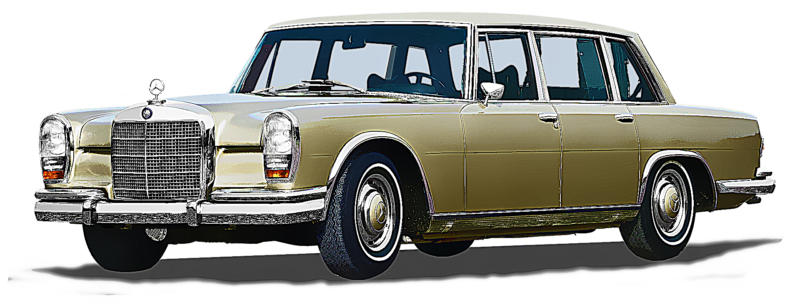
First: the engine
In the 1960s, a large number of vehicles were equipped with a flathead or OHV engine. OHV has a valve located in the engine head, set in motion by a pusher driven by a camshaft which is in the engine block. Engineers from the Mercedes-Benz motorsport section showed off their potential in this case. The presented M100 engine unit drew heavily from motorsport, but the characteristics of its work matched the character of the limousine. It had a capacity of 6.3L, with V8 cylinders arrangement. The engine timing was chain driven, and it had shafts and valves in each cylinder head (SOHC). The block was made of cast iron and the heads were die-cast aluminum. What is most common in sports cars: the crankshaft, pistons and connecting rods were forged.
The engine lubrication issue was also solved in a motorsport way, the M100 is equipped with the so-called dry sump. This solution has many advantages: constant oil pressure can be obtained, as there is no situation in which the oil pump sucker is not able to get oil from the pan. In a traditional oil sump system, such situation happens when the oil reaches an inaccessible place for the sucker (e.g. during dynamic cornering oil moves all around the sump). Moreover, there is no oil foaming, and the engine structure itself has a much lower height, as there is no need for a large sump.
An interesting fact is that Mercedes quoted the power of their limousine as the amount of horsepower generated on the rear wheels – total of 250 hp. Nowadays, the vehicles sold have only the engine power specified, not the final power that the car actually translates to the road through the wheels. The engine accessories (depending on the version it were from 5 to 7 V-belts driven from the crank!), the gearbox, the propeller shaft and the differential system absorbed a lot of the power of the engine unit. It is estimated that the engine generated approximately 300 hp. Depending on the area of destination, different power systems for this unit were offered. The overwhelming majority were equipped with mechanical fuel injection. Some versions were specially designed for countries with lower fuel quality and Mercedes equipped them with 4 double carburettors. None of these versions differed in the offered power!
Second: the luxury
Reading the previous paragraph, the question immediately arises: why so many V-belts in a car? Well, apart from the standard engine equipment, it was also necessary to drive the vehicle’s hydraulics, which were responsible for all the features. Lifting windows or soft-closing doors? Hydraulics. Hardening the suspension? Also hydraulics. In addition, a special version was also made for the Pope Paul VI. This model was characterized by a retractable leather roof, and at the back there was a centrally located seat that raised during parades. The hydraulics yet again were responsible for the seat raise.
Why did Mercedes engineers choose such a complicated solution? After all, it was possible to use small electric motors running on a DC current, right? Well, such a solution was simply not satisfactory for a car that should be ultra-luxury. The engineers found that the operation of electric engines was too loud and it won’t suit such car. For this reason, even the aforementioned lifting of the windows was handled by the hydraulics.
The front suspension of this vehicle is a transverse arrangement of two wishbones. The normal springs were replaced by the air springs, and the shock absorbers had a variable characteristic of damping. An anti-roll bar was used to ensure a confident handling. The rear suspension is based on a trailing arm connected to the solid axle. Interestingly, it was not a fully rigid solid axle, as one of two axle shafts could work to some extent close to the differential. Interestingly, this solution was previously also used in the Mercedes 300 SLR mentioned in the introduction, and even in Formula 1 (the famous Silver Arrows). Again, the air spring and the adjustable shock absorbers were used for the damping, and a anti-roll bar for the handling. The suspension performance was regulated by the driver from the inside of the vehicle. We’d like to remind that we are talking about a system with adjustable damping in a car from the 60s of the last century!
Third: an eternal legend
The car was produced basically unchanged for 18 years, until 1981. Each piece was hand built. It was not caused by a lack of manufacturing equipment, but by attention to offer the best quality of the final product. Less than 2,700 units were produced, so the car was not a market success. Probably the sales target was not achieved, but the car was supposed to manifest Mercedes’ capabilities which it fully realized. What the Mercedes-Benz offered surpassed even the Rolls Royce.
The customer list for this model was very interesting. Quite a few of the buyers of the 600 were peoples form the covers of the newspapers. They were world-class stars (such as Elvis Presley or Jack Nicholson), magnates, Pope Paul VI, heads of state and… dictators, such as Saddam Hussein himself. For this group of customers, a special version was offered, which could be armoured and most often had a long wheelbase.
Much of the produced Mercedes 600 has been preserved in relatively good condition to this day. Undoubtedly, it is influenced by an interesting list of first owners and that these cars did not change owners very often. We would like to write that it was influenced by above-average durability, but unfortunately, it is not. After so many years, the hydraulic system often encounters some problems, and its repairs are pretty expensive. On the web it is easy to find information about the tailgate lock cost (which was by the way also a hydraulic based system) of around 7,800 euros. Those huge costs do not prevent many collectors from taking care of their vehicles because it is truly unique and its value does not decrease.
The owners of this extraordinary vehicle value keeping them in original state. Our passion for the automotive industry allowed us to offer the service of the Mercedes 600 (W100) engine mounts regeneration. Thanks to this, only the wear element is replaced. The body still remains original, and the rubber is reapplied, so it remains as it left from the factory. In our catalogue you can also find elements of the front and rear suspension for Mercedes 600.

